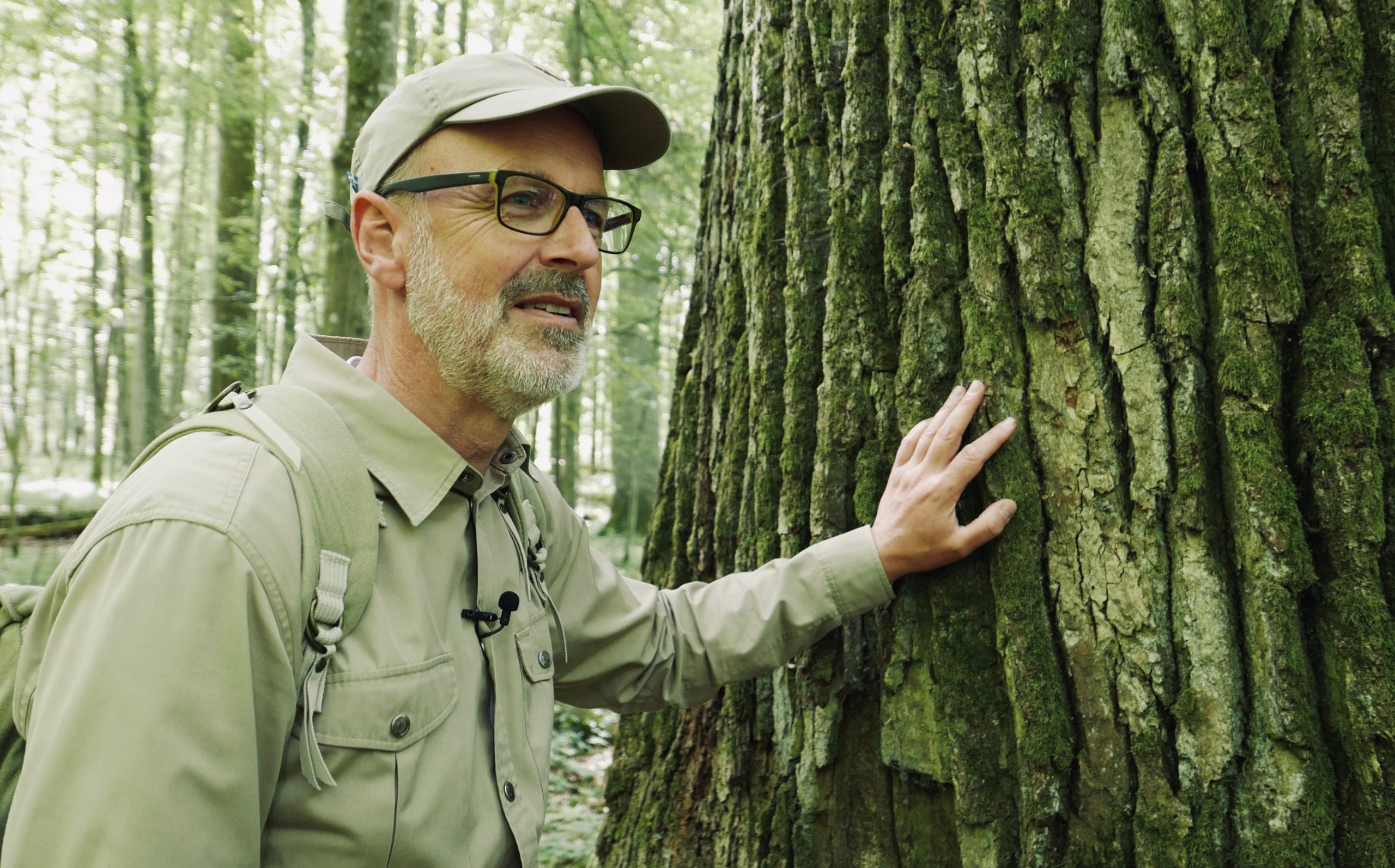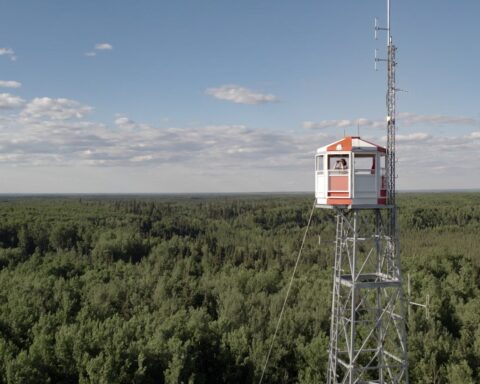The Hidden Life of Trees
(Germany, 84 min.)
Dir. Jörg Adolph, Jan Haft
As we find ourselves in the throes of summer, many city dwellers yearn for the quintessential Canadian summer experience in the great outdoors: canoeing, kayaking, and hiking through lush forests. Gripped by lakeside sunsets and itchy mosquito bites, many of us would be surprised to learn that the surrounding nature might not be all that natural.
There are very few primordial forests still in existence. Many of today’s forests have been planted—or replanted—by humans. These forests consist of groups of trees of the same species that aren’t necessarily native to the land, all around the same age, and lacking the biodiversity of a thriving natural forest. German forester, Peter Wohlleben, writes of this phenomenon in his best-selling book The Hidden Life of Trees, which was recently adapted into a documentary of the same name by acclaimed German filmmaker Jörg Adolph, and nature documentarian, Jan Haft.
Wohlleben has had a love of nature and Germany’s forests since he was a child. So, forestry seemed like a natural career choice. His idealized view of forestry diminished over time, as he worked in the industry for over 20 years. To his dismay, he realized working in the forestry industry is to work for profit, not for nature.
The forest ranger has been giving guided tours of his beloved woods for over three decades and is an eloquent and approachable public speaker and educator. Wohlleben isn’t so much a character in the film as he is its guide. A woodland Virgil, he guides viewers through forests in Germany, Poland, Sweden, and Vancouver Island, making us aware that many apparent mysteries of life can be uncovered right below our feet.
The magical elements of the wonders of the woods are captured by Haft’s nature footage, which are woven into the documentary to help illustrate whichever issue or concept Wohlleben is tackling. For example, on one of his tours in Germany, Wohlleben explains how beech and oak trees, which are native to German forests, coordinate when to bloom amongst their species. The film then cuts from Adolph’s footage to Haft’s, capturing beautiful time-lapse images of a blooming forest as orchestral music plays. Suddenly, the music is cut short and the serenity of the scene is replaced by childish screams. The film cuts back to Adolph’s footage of Wohlleben. He is giving another tour, but this time to children who he has encouraged to shriek into the wilderness, to which they ecstatically oblige.
“Can you scream like this in the forest?” he asks them. “No, it will scare the animals,” one of them replies. “Adults may tell you that but it’s not true,” Wohlleben informs them. He goes on to explain that when children make noise it indicates to animals that they are not hunters and are in fact safe. The film cleverly contrasts the harmless screams of children, which are reproached as disruptive to wildlife with real threats that encroach on their habitats, such as hunting, logging, and climate change.
Wohlleben sees wood as a valuable resource and is not against logging, but he is critical of its practices, particularly clear-cutting. On Vancouver Island he meets a small Indigenous community, at risk of losing their forest to clear cutting. If you grew up in Canada, chances are you know several people who have spent their summers tree planting, likely in British Columbia. Tree planting is often seen as logging companies’ remedy to the destruction of clear cutting. However, the forests created are monocultures that are planted only so they can grow quickly to be cut down once more. Wohlleben’s pursuit of primeval forests reveals that nature does a much better job of regenerating itself when humans demonstrate the patience to let it do so.
The film and Wohlleben leave us with a hopeful message, that the planet is not in fact doomed but has the power and intelligence to heal itself. The question really is, will humans be around to see it? According to Wohlleben, climate change can’t be stopped by attempts to dominate nature; for him, what is crucial is for humans to take a step back. The most difficult part in the battle against climate change is the cooperation it requires amongst humankind. Wohlleben suggests we should look at trees for an example as, “They [trees] know they can only get very old through community.”
The Hidden Life of Trees opens in the USA on July 16 and in Canada on August 27.













